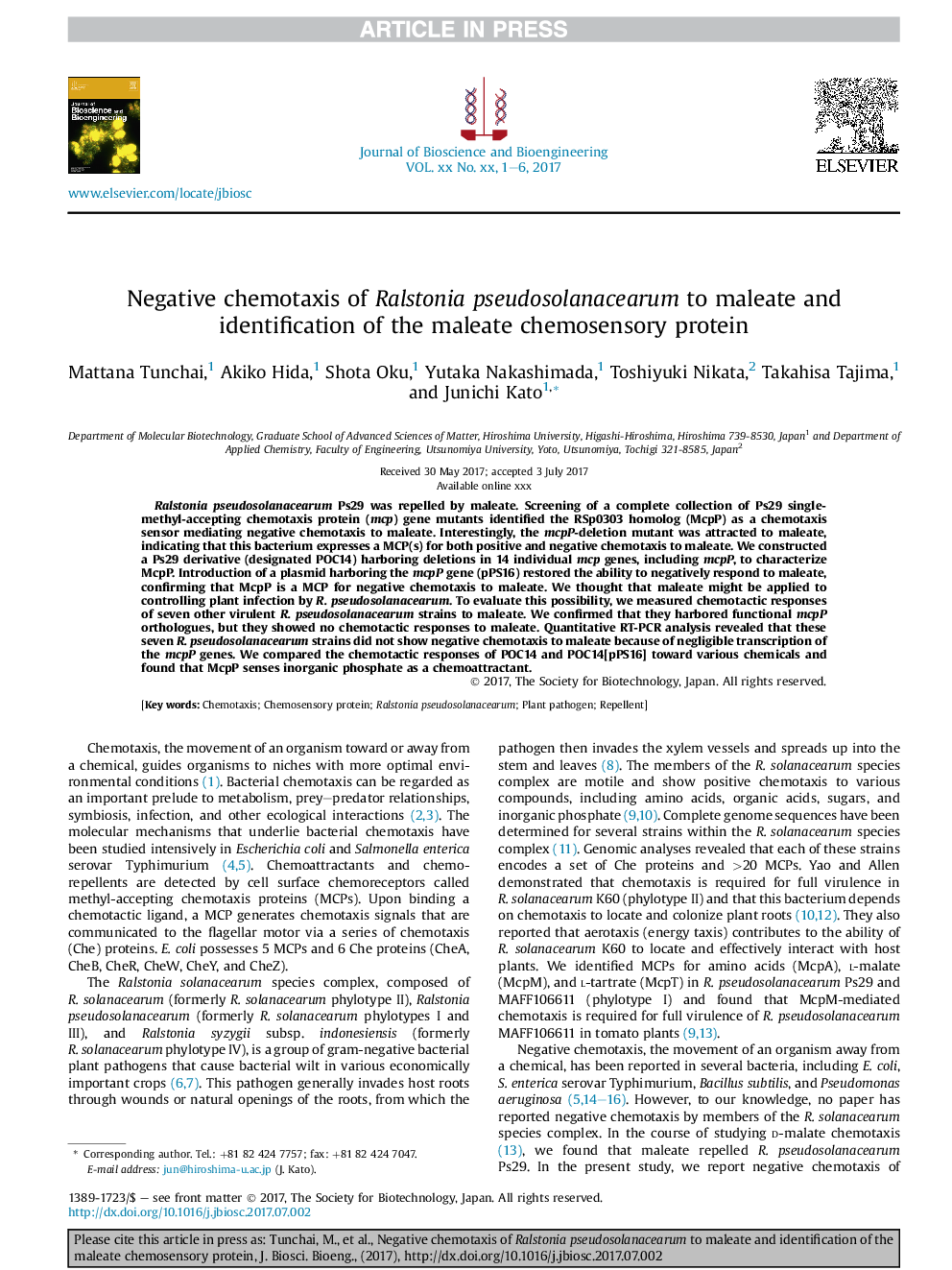| Article ID | Journal | Published Year | Pages | File Type |
|---|---|---|---|---|
| 6490073 | Journal of Bioscience and Bioengineering | 2017 | 6 Pages |
Abstract
Ralstonia pseudosolanacearum Ps29 was repelled by maleate. Screening of a complete collection of Ps29 single-methyl-accepting chemotaxis protein (mcp) gene mutants identified the RSp0303 homolog (McpP) as a chemotaxis sensor mediating negative chemotaxis to maleate. Interestingly, the mcpP-deletion mutant was attracted to maleate, indicating that this bacterium expresses a MCP(s) for both positive and negative chemotaxis to maleate. We constructed a Ps29 derivative (designated POC14) harboring deletions in 14 individual mcp genes, including mcpP, to characterize McpP. Introduction of a plasmid harboring the mcpP gene (pPS16) restored the ability to negatively respond to maleate, confirming that McpP is a MCP for negative chemotaxis to maleate. We thought that maleate might be applied to controlling plant infection by R. pseudosolanacearum. To evaluate this possibility, we measured chemotactic responses of seven other virulent R. pseudosolanacearum strains to maleate. We confirmed that they harbored functional mcpP orthologues, but they showed no chemotactic responses to maleate. Quantitative RT-PCR analysis revealed that these seven R. pseudosolanacearum strains did not show negative chemotaxis to maleate because of negligible transcription of the mcpP genes. We compared the chemotactic responses of POC14 and POC14[pPS16] toward various chemicals and found that McpP senses inorganic phosphate as a chemoattractant.
Related Topics
Physical Sciences and Engineering
Chemical Engineering
Bioengineering
Authors
Mattana Tunchai, Akiko Hida, Shota Oku, Yutaka Nakashimada, Toshiyuki Nikata, Takahisa Tajima, Junichi Kato,
